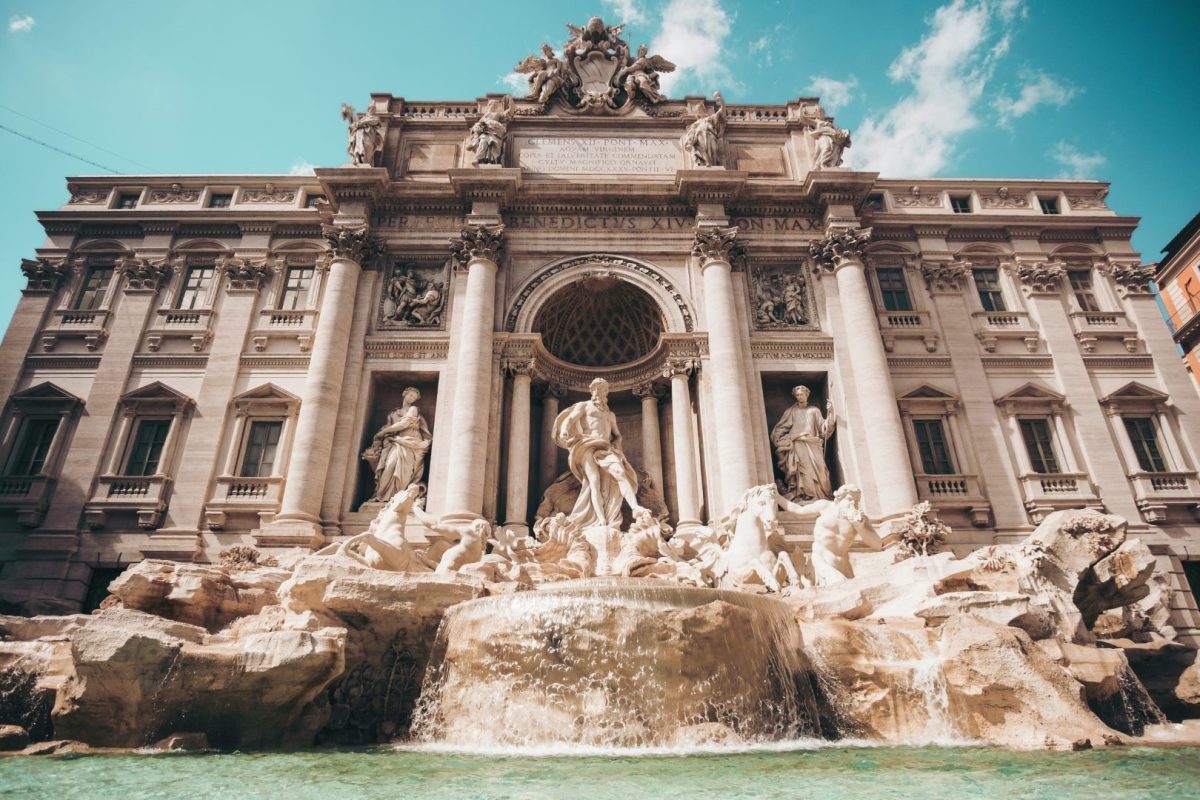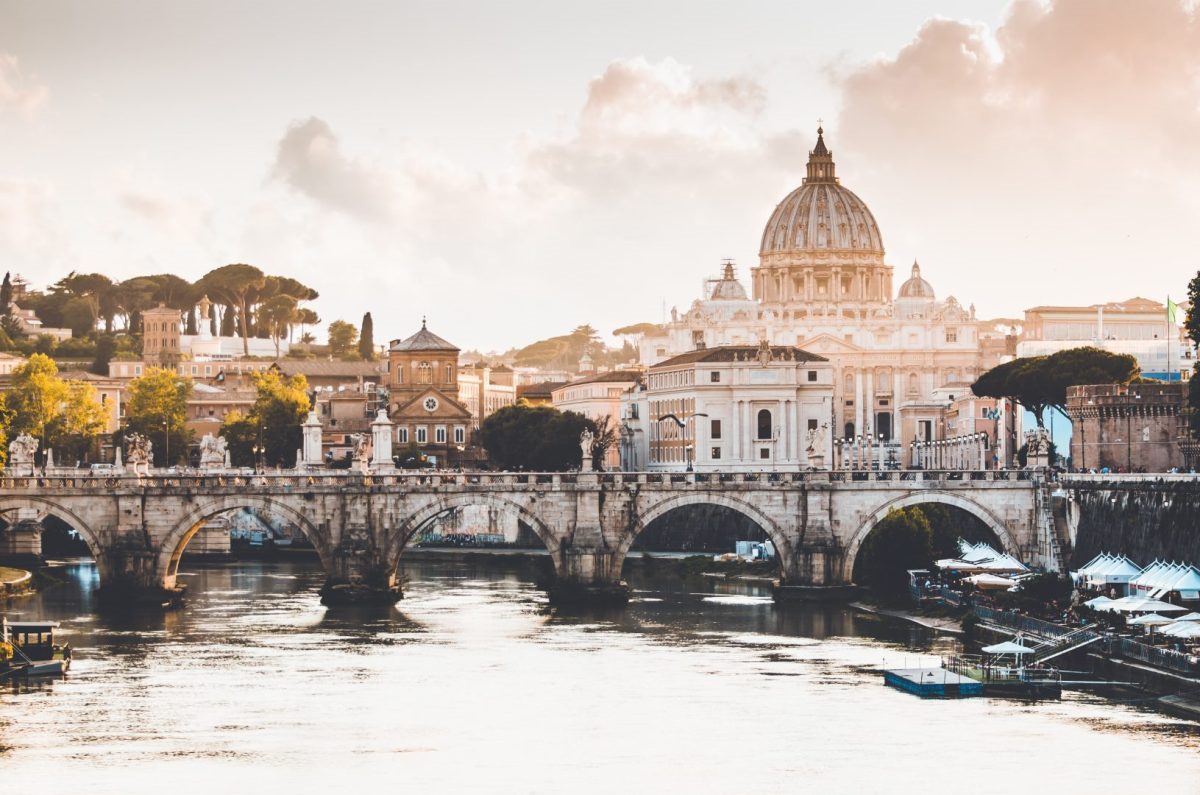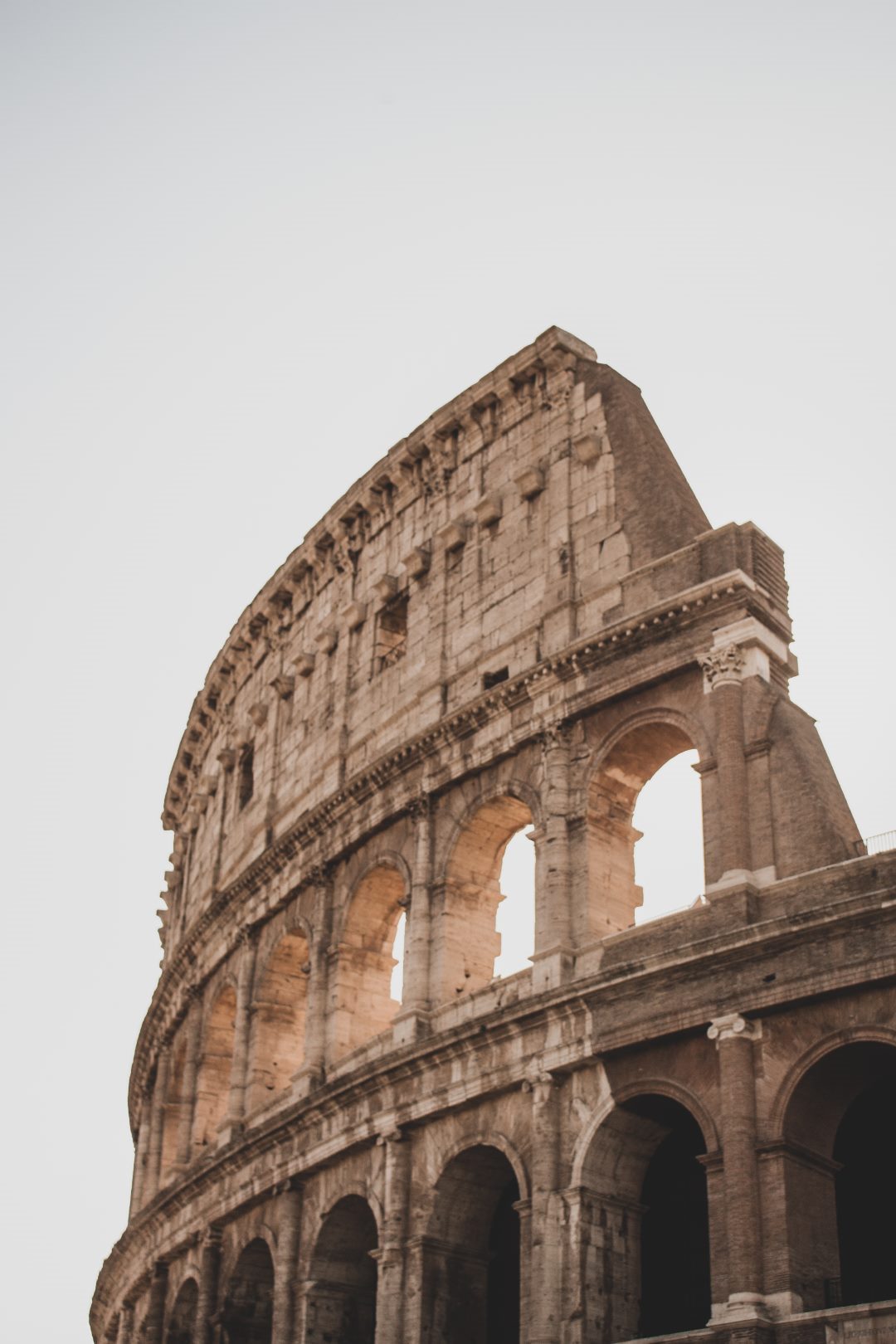How to Plan Your Private Guided Walking Tour of Rome
Rome, the capital city of Italy, is an ancient city that boasts of rich history and culture. The best way to explore this magnificent city is on foot through a Private Guided Walking Tour. You can discover Rome’s hidden gems, breathtaking architecture, and fascinating history all within a few hours. This guide will provide you with all the essential details and tips to help you plan your perfect tour of Rome.Overview of the Tour
The Private Guided Walking Tour of Rome allows you to explore the city’s iconic landmarks and hidden gems at your own pace with a knowledgeable private tour guide. The tour starts at the Spanish Steps, and from here, you’ll visit Trevi Fountain, the Pantheon, Piazza Navona, the Jewish Ghetto, Circus Maximus, and end at the Colosseum. Your private guide will provide you with insights into the history and significance of each landmark, making the experience educational and engaging.What’s Included?
The Private Guided Walking Tour of Rome includes:- A private tour guide fluent in your language
- Pick-up and drop-off services from designated tour meeting points
- Access inside the Colosseum
Gelato/Coffee
During the tour, you’ll have the opportunity to taste some of the best gelato in Rome. Italy is known for its artisanal gelato, and it’s a must-try when visiting Rome. Your tour guide will also take you to one of the most famous Italian coffee shops, where you can taste a delicious espresso or cappuccino.Meeting and Pick-Up
The tour meeting point is at Babington’s tea room, Piazza di Spagna 23, 00187 Rome RM Italy. Your private guide will meet you here and take you on the tour. The tour ends at the Colosseum, Piazza del Colosseo 1, 00184 Rome RM Italy.What To Expect
During the tour, you’ll visit Rome’s iconic landmarks and hidden gems. Here’s a highlight of the places you’ll visit:- Spanish Steps: one of the most beautiful squares in Rome and a celebrated landmark. You’ll learn about the history and significance of this stunning historical monument.
- Trevi Fountain: another iconic landmark, the Trevi Fountain is known for its breathtaking beauty and legends. Your tour guide will share the fascinating history and myths surrounding the fountain.
- Pantheon: one of the most impressive architectural and engineering achievements of the ancient world. You’ll learn about its remarkable history, cultural significance, and its relevance in modern Rome.
- Piazza Navona: a stunning square with three magnificent fountains, you’ll learn about the history and culture of the square, its significance in Rome and its famous events.
- Jewish Ghetto: a fascinating neighbourhood with unique landmarks, galleries, and museums. You’ll learn about the history and culture of the Jewish Ghetto, including its cuisine and traditions.
- Circus Maximus: a massive chariot racing stadium, the largest stadium ever built, you’ll learn about the significance and history of the Circus Maximus, and discover how it influenced Roman history and culture.
- Colosseum: one of the most famous landmarks in the world, the Colosseum is a symbol of the ancient Roman empire’s might and brutality. You’ll learn about its remarkable history, cultural significance, and its relevance in modern Rome.
Additional Info
It’s essential to be aware of the additional information when booking your Private Guided Walking Tour of Rome:- Confirmation of Booking: Once booked, a confirmation email will be sent to you, confirming the tour details and pick-up time and location.
- Accessibility: The tour is wheelchair accessible, and stroller-friendly
- Physical Fitness Level: Travelers should have a moderate physical fitness level.
- Private Activity: This is a private tour/activity. Only your group will participate, ensuring a personalized experience.
- Cancellation Policy: You can cancel up to 24 hours in advance of the tour for a full refund. However, if you cancel less than 24 hours before the tour or fail to show up, you won’t be refunded.
Book Your Tour Now
Taking a Private Guided Walking Tour of Rome is an excellent opportunity to explore Rome’s essential landmarks, hidden gems, and cultural heritage at your own pace. You’ll have a knowledgeable private guide to educate and engage you in the tour, making it both informative and enjoyable. Book the tour here, and get ready for a fantastic experience that you’ll never forget!
Frequently Asked Questions (FAQs) about Rome
1. What is Rome famous for?
Rome is famous for being the capital city of Italy and the heart of the ancient Roman Empire. It is also known for being the center of the Roman Catholic Church, having some of the world’s most iconic landmarks such as the Colosseum, the Vatican Museums, the Pantheon, and Trevi Fountain. Additionally, Rome is famous for its art, food, wine, and fashion.
2. What is the best time to visit Rome?
The best time to visit Rome is from April to June or September to November when the weather is mild. July and August can be very hot and crowded. Winter season from December to February can be cold and rainy, but it is the best time to avoid crowds.
3. What are the top attractions to visit in Rome?
Rome has numerous top-rated attractions to visit including:
- The Colosseum
- The Roman Forum
- The Pantheon
- The Vatican Museums, including the Sistine Chapel
- The Trevi Fountain
- The Spanish Steps
- The Borghese Gallery and Museum
4. How can I skip the line to visit the attractions in Rome?
You can skip the lines in Rome by buying tickets in advance or by taking a guided tour. Most of the popular attractions have fast-track options that allow visitors to avoid the long queues.
5. What is the dress code to enter the Vatican City or other religious sites in Rome?
When visiting the Vatican City or other religious sites in Rome, it is recommended to dress appropriately. This means no shorts, bare shoulders, or revealing clothing. Visitors should dress modestly out of respect for religious customs.
6. What is the typical food in Rome?
The typical Roman food is characterized by simple and traditional dishes that use locally sourced and seasonal ingredients. Some of the most famous dishes include:
- Pasta Carbonara – pasta dish with bacon, eggs, and Pecorino cheese
- Cacio e Pepe – pasta dish with Pecorino cheese and black pepper
- Supplì – fried rice balls filled with mozzarella cheese and tomato sauce
- Porchetta – roast pork seasoned with herbs and spices
- Gelato – Italian-style ice cream with various flavors
7. Can I drink tap water in Rome?
Yes, tap water in Rome is safe to drink. It is filtered and chlorinated, but some people may prefer to drink bottled water for taste reasons.
8. How to get around in Rome?
The best way to get around Rome is on foot or by using public transportation. The city has an extensive bus and metro network, and visitors can buy tickets at kiosks, newsstands, or vending machines. Taxis are also available, but they can be expensive and subject to heavy traffic in the city center.
9. Where to stay in Rome?
Rome has a wide range of accommodation options for all budgets and preferences. Some of the most popular areas to stay in Rome include:
- City Center – near the main attractions, but can be noisy and crowded
- Trastevere – charming neighborhood with narrow streets and traditional restaurants
- Monti – trendy and hip neighborhood with artisan shops and vintage boutiques
- Prati – residential district with elegant shops and restaurants, close to the Vatican City
10. Is Rome safe for tourists?
Rome is generally safe for tourists, but like any big city, visitors should take some precautions to avoid pickpockets and scams. It is important to keep an eye on your belongings, especially in crowded areas and public transportation. It is also advisable to avoid walking alone at night in unfamiliar or poorly lit areas.
11. How many days should I spend in Rome?
It is recommended to spend at least three days in Rome to have enough time to see the main attractions and experience the local culture. However, if you want to explore the city more in-depth and enjoy some leisure time, you may want to stay for a week or more.
12. What is the currency used in Rome?
Italy uses the Euro (€) as its currency, the same as other European Union countries that adopted it as their legal tender. Visitors can exchange money at banks, exchange offices, or withdraw cash from ATMs located throughout the city.
13. Do I need a visa to visit Rome?
Visitors from some countries may need a visa to enter Italy, while others can stay for up to 90 days without a visa. It is recommended to check with the Italian embassy or consulate in your country before traveling to ensure that you have the necessary documents.
14. What is the time zone in Rome?
Rome is in the Central European Time zone, which is one hour ahead of Greenwich Mean Time (GMT+1). It observes daylight saving time from the end of March to the end of October and sets its clocks one hour ahead.
15. What is the language spoken in Rome?
The official language of Rome and Italy is Italian. English is widely spoken in tourist areas, but it is always useful to learn some basic Italian phrases when traveling to Italy.
Book Your Tour Now
Rome is a fascinating city with a rich history, culture, and cuisine. By addressing some of the most common questions that tourists have when visiting Rome, this FAQ aims to provide a helpful guide for planning a trip to this beautiful city.
Whether you want to explore the ancient ruins of the Roman Empire, admire the masterpieces of Italian Renaissance art, or savor the flavors of Italian food and wine, Rome has something to offer for everyone.

How to Spend Your Time as a Tourist in Rome
Rome, the eternal city, is one of the most visited tourist destinations in the world. Filled with history, art, and culture, Rome is a city that you can never finish exploring. If you’re planning a trip to Rome, here’s a guide on how to spend your time there.1. Visit the Iconic Attractions
Rome has some of the most famous historical sites in the world. You must visit the Colosseum, the Pantheon, the Roman Forum, and the Trevi Fountain during your time in the city. You can buy a Roma Pass or a ticket that includes all the main attractions.The Colosseum
The Colosseum is an iconic symbol of Rome. It is a two-thousand-year-old amphitheater that was once used for gladiator games, animal hunts, and other entertainments. Today, it’s a major tourist attraction that offers guided tours.The Pantheon
The Pantheon is a former Roman temple now turned church. It is one of the best-preserved ancient buildings in the city, and it’s famous for its stunning concrete dome.The Roman Forum
The Roman Forum was once the center of the ancient city where business, politics, and religion took place. It’s now an archaeological site with ruins of ancient temples, basilicas, arches, and public buildings.The Trevi Fountain
The Trevi Fountain is a Baroque masterpiece that is famous for its stunning sculptures and its legend. According to the legend, throwing a coin into the fountain guarantees a return visit to Rome.2. Explore Vatican City
Vatican City is an independent city-state surrounded by Rome. It is home to some of the world’s most famous art and architecture, including St. Peter’s Basilica, the Sistine Chapel, and the Vatican Museums.St. Peter’s Basilica
St. Peter’s Basilica is one of the largest churches in the world and is an important pilgrimage site for Catholics. The basilica is home to many masterpieces, including Michelangelo’s Pieta statue.The Sistine Chapel
The Sistine Chapel is famous for its ceiling decorated by Michelangelo. The chapel is also the site of papal conclave, where new popes are elected.The Vatican Museums
The Vatican Museums have one of the most extensive art collections in the world. The museums house masterpieces by famous artists such as Leonardo da Vinci, Caravaggio, and Raphael.3. Wander through the Neighborhoods
Rome is a city that is best explored on foot. Each neighborhood has its own character and history and offers a unique experience for tourists.Trastevere
Trastevere is a charming, bohemian neighborhood that is famous for its narrow streets, colorful houses, and lively restaurants and bars.Monti
Monti is a hip and trendy neighborhood that has become the go-to spot for tourists looking for vintage shops, street markets, and art galleries.Testaccio
Testaccio is a neighborhood that is famous for its food culture. Here you will find traditional Roman dishes such as cacio e pepe and carbonara. You can also visit the local market and search for fresh produce.4. Indulge in Italian Cuisine
Italian cuisine is famous all over the world, and Rome is the perfect place to indulge in traditional Italian dishes.Pizza
Pizza is a staple of Italian cuisine. Rome has many pizzerias that offer authentic Italian flavors, such as Pizzeria Da Baffetto and La Montecarlo.Pasta
Pasta is another Italian classic. Rome has many traditional pasta dishes such as carbonara, amatriciana, and cacio e pepe. You can try them out in restaurants such as Felice a Testaccio and Roscioli.Gelato
Gelato is the Italian version of ice cream, and it’s a must-try during your visit to Rome. Some of the best places to try gelato are Giolitti and Gelateria del Teatro.5. Experience Roman Nightlife
Rome’s nightlife is lively and vibrant. There are many bars, clubs, and pubs that offer a unique experience for tourists.Campo de’ Fiori
Campo de’ Fiori is a popular square in Rome that has many bars and pubs. The square is a great place to start exploring the city’s nightlife.Testaccio
Testaccio is not only famous for its food culture, but it also has many bars and clubs that are open until late.Trastevere
Trastevere has many coffee shops, bars, and restaurants that offer a relaxed atmosphere. It’s a great place to unwind after a long day of exploring.Book Your Tour Now
Rome is a city that has something to offer for everyone. Whether you’re interested in history, art, culture, or cuisine, Rome has it all. Follow this guide to make the most of your time in the city, and you’ll leave having experienced the best that Rome has to offer.Table of Contents

